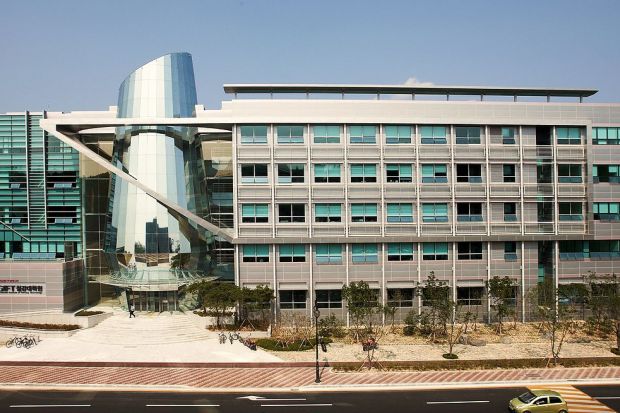POSTECH: AI Helps to Correct Distortions in In Vivo Photoacoustic Images of Humans
Obtaining an accurate speed of sound (SoS) inside the body leads to improved resolution of ultrasound or photoacoustic (PA) images. However, it is difficult to accurately predict the SoS since it differs from person to person, depending on the random distribution of muscle, bone, and fat in each individual. To this, a Korean research team has proposed a novel method to solve this issue using artificial intelligence (AI).
A POSTECH research team led by Professor Chulhong Kim and Dr. Seungwan Jeon (Departments of Electrical Engineering and Convergence IT Engineering) demonstrated a new deep learning technique to correct the distortions in photoacoustic images caused by the difference in SoS.
Photoacoustic imaging modality detects ultrasound signals generated through transient thermal expansion of tissues after optical absorbers are illuminated by pulsed light. Only a shallow depth of less than 1 mm can be viewed with optical imaging, whereas photoacoustic imaging can reconstruct several centimeters of human tissue.
However, conventional ultrasound or photoacoustic imaging assumes a representative SoS value such as 1,540 m/s which may cause aberrations. It was sometimes necessary to view the images without obtaining a sufficient signal due to the limitations in the imaging system. In this case, artifacts appeared in the image and interfered with its interpretation.
To overcome this issue, the researchers produced a distorted photoacoustic image by arbitrarily setting the medium’s SoS and an actual undistorted photoacoustic image from an acoustic wave simulation. The AI was trained accordingly and its effectiveness was confirmed by applying it to simulated trained images and PA images of humans.
As a result, the distortions that occurred in conventional PA images were reduced, the intensity of the streak artifacts near the main signal was reduced by up to 5%, and the signal-to-noise ratio (SNR) was increased to about 25 decibels (dB) at maximum. Even when only 64 data acquisition channels of the total 128 channels in the imaging system were used, AI helped to produce a PA image with almost the same quality.
Specifically, SoS aberrations in the PA images of blood vessels in healthy human limbs and melanoma patients were alleviated and the resolution was improved. Major diagnostic information such as oxygen saturation only showed a difference of about 5%, proving that it was superior to AI models such as U-net or Segnet. This technique can be used in actual clinical conditions where the medium has a heterogeneous SoS distribution or the data sampling is sparse.
“We can obtain high-resolution images fairly quickly using this technique,” explained Professor Kim. “It is anticipated to be applicable in various clinical studies in the future, such as diagnosing vascular diseases in extremities of the human body, determining the stage of a cancer, and setting precise boundaries for resection.”
This research was recently published in IEEE Transactions on Image Processing, which is a top 3% SCIE journal in the electrical & electronic engineering field (JCR, 2020). The study was conducted with the support from the Mid-Career Researcher Program and System Semiconductor Fusion Human Resource program of Korea’s Ministry of Science and ICT, the Key Research Institutes in Universities program of the Ministry of Education, the Korea Medical Device Development Fund of the Ministry of Health and Welfare, and the BK21 FOUR Project.

